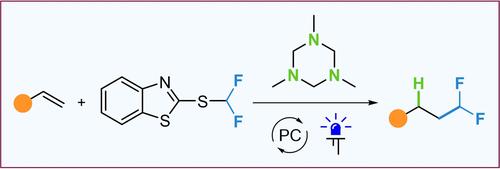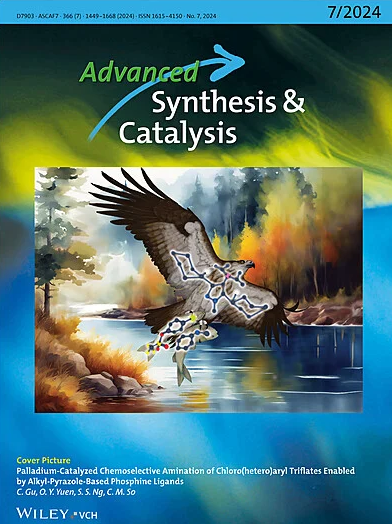高性能聚合物太阳能电池系链小分子受体芳香族核卤素原子工程
IF 4.4
2区 化学
Q2 CHEMISTRY, APPLIED
引用次数: 0
摘要
拴系小分子受体(SMAs),其中多个sma亚基通过柔性链连接到芳核,提出抑制热力学松弛时,与聚合物供体混合,以构建稳定的聚合物太阳能电池(PSCs)。然而,优化它们的化学结构以进一步提高器件性能仍然是一个挑战,需要在分子聚集和光伏效率之间进行仔细的微调。在本研究中,系链二聚体的光伏性质可以通过在芳香核上的卤素原子工程来有效地调制。具体来说,设计了含氯原子的镝- cl和含溴原子的镝- br。研究发现,与溴离子受体相比,氯离子受体增强了分子间相互作用,促进了电荷传输,并优化了活性层的形态。值得注意的是,基于DY-Cl的PSCs的功率转换效率达到18.72%,在运行1000小时后保持超过初始PCE的80%。这些发现强调了系系受体上卤素原子工程作为一种简单而有效的方法获得高效率和稳定的PSCs的潜在优势。本文章由计算机程序翻译,如有差异,请以英文原文为准。

Halogen-Atom Engineering on Aromatic-Core in Tethered Small Molecule Acceptors for High-Performance Polymer Solar Cells
Tethered small molecular acceptors (SMAs), where multiple SMA-subunits are connected to the aromatic core via flexible chains, are proposed to suppress thermodynamic relaxation when blended with polymer donors to construct stable polymer solar cells (PSCs). However, optimizing their chemical structure to further enhance device performance remains a challenge, requiring careful fine-tuning between molecular aggregation and photovoltaic efficiency. In this study, the photovoltaic properties of tethered dimers are effectively modulated simply through halogen-atom engineering on the aromatic core. Specifically, DY-Cl with a chlorine atom and DY-Br with a bromine atom are designed. The study revealed the chloride acceptor enhances the intermolecular interaction, promotes charge transport, and optimizes the morphology of the active layer compared with its bromide counterpart. Notably, DY-Cl based PSCs achieves a power conversion efficiency of 18.72%, maintaining over 80% of initial PCE after operating for 1000 h. These findings underscore the potential advantages of halogen-atom engineering on tethered acceptors as a straightforward yet effective method to achieve high efficiency and stable PSCs.
求助全文
通过发布文献求助,成功后即可免费获取论文全文。
去求助
来源期刊

Advanced Synthesis & Catalysis
化学-应用化学
CiteScore
9.40
自引率
7.40%
发文量
447
审稿时长
1.8 months
期刊介绍:
Advanced Synthesis & Catalysis (ASC) is the leading primary journal in organic, organometallic, and applied chemistry.
The high impact of ASC can be attributed to the unique focus of the journal, which publishes exciting new results from academic and industrial labs on efficient, practical, and environmentally friendly organic synthesis. While homogeneous, heterogeneous, organic, and enzyme catalysis are key technologies to achieve green synthesis, significant contributions to the same goal by synthesis design, reaction techniques, flow chemistry, and continuous processing, multiphase catalysis, green solvents, catalyst immobilization, and recycling, separation science, and process development are also featured in ASC. The Aims and Scope can be found in the Notice to Authors or on the first page of the table of contents in every issue.
 求助内容:
求助内容: 应助结果提醒方式:
应助结果提醒方式:


